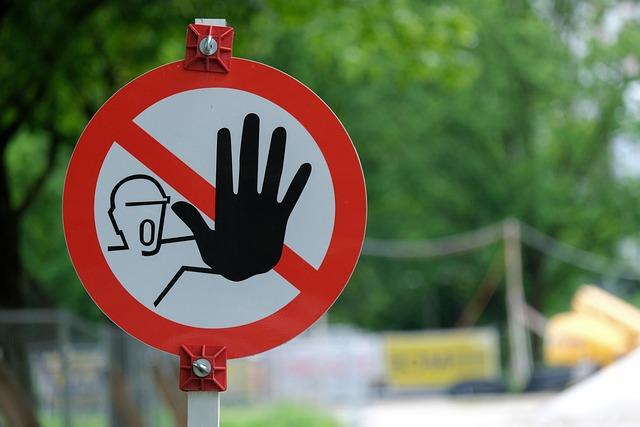In the intricate dance of human relationships, emotions serve as both the rhythm and the melody, guiding partners through the harmonious and sometimes discordant journey of connection. Yet, what happens when one partner seems to miss a beat, their emotional chords muted or altogether silent? The concept of emotional unavailability, often cloaked in mystery and misunderstanding, emerges as a formidable barrier to intimacy and mutual understanding. In this exploration, we delve into the enigma of emotional unavailability, unraveling its origins, manifestations, and implications. Is it a transient state warranting patience and compassion, or a fundamental disconnect justifying the difficult decision to part ways? As we navigate this complex terrain, we seek to understand whether emotional unavailability is a mere obstacle or a definitive signpost pointing towards the exit.
Understanding Emotional Unavailability and Its Impact on Relationships
Emotional unavailability can manifest in various ways, often leaving partners feeling isolated and misunderstood. Those who are emotionally unavailable may struggle to express their feelings, avoid deep conversations, or even dismiss their partner’s emotional needs. This behavior can stem from past trauma, fear of vulnerability, or even a lack of awareness about their own emotions. Understanding these root causes is crucial, as it sheds light on whether the relationship can evolve or if it’s stuck in an emotional stalemate.
The impact of emotional unavailability in relationships is profound. Partners may experience:
- A persistent feeling of being emotionally neglected
- Difficulties in building a deeper connection
- Frequent misunderstandings and communication breakdowns
- An unbalanced dynamic where one partner feels they are giving more emotionally
While some relationships can overcome these challenges through patience and open communication, others may find that the emotional gap is too wide to bridge. The decision to stay or walk away often hinges on whether both partners are willing to address the issue together.

Recognizing the Signs: How to Identify Emotional Unavailability in a Partner
Spotting emotional unavailability in a partner can sometimes feel like deciphering an intricate puzzle. Emotional unavailability often manifests through subtle behaviors and patterns. It’s crucial to recognize these signs to better understand your relationship dynamics. Here are a few indicators that may suggest your partner is emotionally distant:
- Reluctance to Discuss Feelings: They may avoid conversations that require emotional depth, keeping discussions at a surface level.
- Inconsistent Communication: Their engagement may fluctuate, with periods of intense connection followed by silence or withdrawal.
- Avoidance of Commitment: They might shy away from making future plans, indicating a hesitance to deepen the relationship.
- Minimal Emotional Support: When you seek comfort, they may offer practical solutions rather than empathetic listening.
- Preference for Solitude: They may prioritize alone time over spending quality time together, signaling a desire to maintain emotional distance.
Understanding these signs is not just about identifying potential issues, but also about fostering a dialogue that can lead to deeper connection or clarity on whether to move forward together. Remember, recognizing these patterns is the first step in navigating the complexities of emotional intimacy.

Navigating the Challenges: Strategies for Addressing Emotional Barriers
Understanding and addressing emotional barriers can be a complex process, requiring patience and empathy. Strategies for navigating these challenges involve a blend of self-awareness and proactive communication. Here are some approaches to consider:
- Practice Self-Reflection: Before addressing someone else’s emotional unavailability, it’s crucial to assess your own feelings and expectations. Are your needs reasonable, and are you prepared for the emotional labor involved in supporting someone through their journey?
- Open and Honest Communication: Establish a safe space for dialogue where both parties can express their feelings without judgment. This fosters a mutual understanding and can help in identifying the root causes of emotional unavailability.
- Set Boundaries: Clearly defining what you can and cannot accept is vital. Boundaries help protect your emotional well-being while allowing the other person the space to work on their issues.
- Encourage Professional Help: Sometimes, the emotional barriers are too complex to handle alone. Suggesting therapy or counseling can be a constructive step toward healing.
Remember, while it’s important to support others, prioritizing your emotional health is equally crucial. Deciding to walk away or stay requires careful consideration of these strategies and their impact on your well-being.

When to Walk Away: Making the Decision for Your Emotional Well-being
Recognizing when to prioritize your emotional well-being can be a challenging yet empowering journey. Emotional unavailability in a relationship can manifest as a barrier to genuine connection and growth. It’s crucial to assess whether this emotional gap is a temporary phase or a consistent pattern. Here are some signs that may suggest it’s time to reconsider your path:
- Consistent lack of emotional support: Feeling unheard or unsupported over a long period can erode your sense of self-worth.
- Inability to express emotions: When one partner continually suppresses their feelings, it can create a toxic environment of misunderstanding and frustration.
- Avoidance of deep conversations: If attempts at meaningful dialogue are consistently deflected or dismissed, it may indicate a lack of investment in the relationship’s emotional depth.
Deciding to walk away is never easy, but nurturing your emotional health is paramount. It’s essential to weigh the impact on your mental well-being against the potential for change and growth within the relationship. Sometimes, choosing yourself means stepping away from situations that hinder your emotional development.








